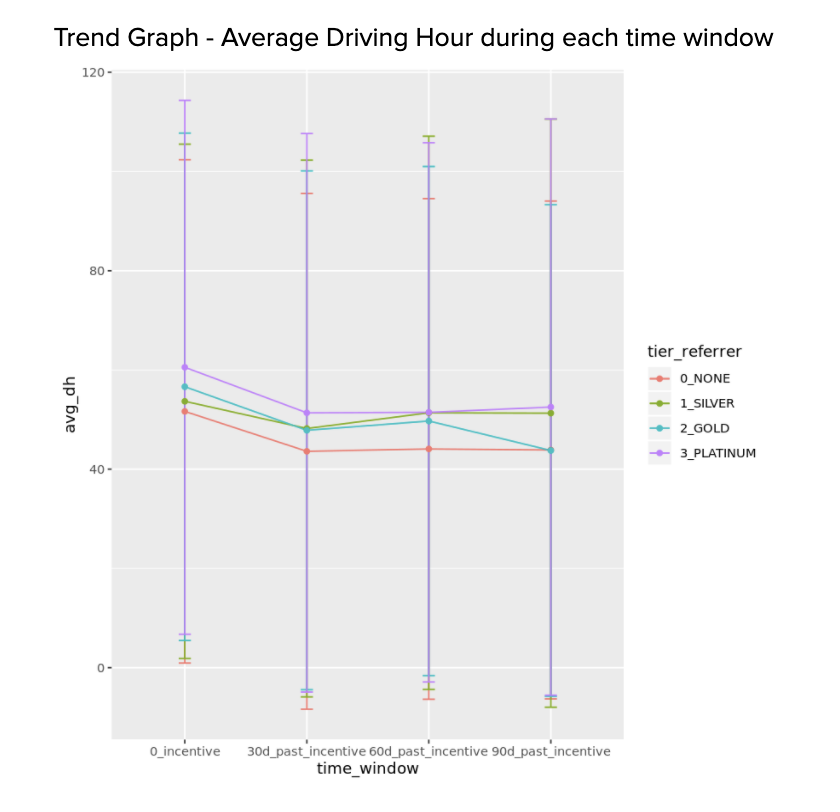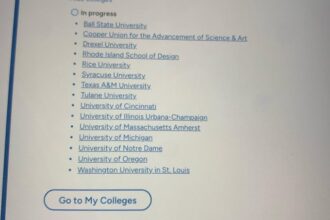
Written by Morteza Taiebat and Han Gong at Lyft.
Introduction
This post is authored by two current Lyft Data Scientists, Morteza Taiebat and Han Gong, who both began their journeys at the company as interns. They share their experiences leading up to their internships, the work they did while at Lyft, and what ultimately motivated them to return as full-time employees.
Whether you’re a prospective intern, a new hire, a candidate in the interview process, or simply curious about life at Lyft, this post offers insights into what it’s like to grow your career here.
Story from Morteza Taiebat
Background Before Lyft
My journey at Lyft began through the EDF Climate Corps program, which places fellows in top organizations through a rigorous technical assessment process. Coming from an academic background, my research focused on studying the impacts of emerging transportation trends like automation, electrification, and shared mobility on travel behavior and sustainability outcomes. Joining Lyft gave me the opportunity to apply my expertise in a way that aligned perfectly with my passion for sustainability and shaping the future of transportation.
Team at Lyft
I joined Lyft’s Sustainability team in May 2020, around the time the company began outlining its vision and strategy to scale electric vehicle adoption across the platform. During my internship, I focused on building causal models to assess EV suitability and impact on driver productivity. This involved evaluating which types of driving patterns and operational contexts were most suited for EV adoption, in order to maximize driver benefits and emissions reductions. I assessed EV suitability based on factors like driving patterns, cost savings, and charging infrastructure availability, while also analyzing how EV adoption influenced driver engagement. By leveraging these models, we were able to quantify the impact of EV conversion on driver productivity and inform strategies for sustainable adoption across the different lines of business on the Lyft platform.
Intern Project
I focused on analyzing Driver-Hour (DH), Lyft’s preferred metric for measuring driver productivity, and on understanding the causal impact of EV conversion on this metric. To evaluate the effect of EV adoption on DH, I developed a difference-in-differences (DiD) model that compared changes in driver productivity before and after EV conversion. This quasi-experimental design contrasted the productivity trends of drivers who switched to EVs (treatment group) with those who continued using internal combustion engine vehicles (control group).
The DiD design hinged on the comparison between two groups over a specified pre and post conversion period:
- Treatment Group: Drivers who switched to EVs in the specific past X months.
- Control Group: Drivers who continued using gas-powered vehicles.
The equation at the heart of this model was:


A major challenge was understanding driver behavior. Many drivers on the Lyft platform are app-switchers, meaning they drive on multiple rideshare or delivery platforms. This limited our visibility into their complete driving patterns. To address this, I worked on integrating third-party data and making assumptions based on observable patterns on the Lyft platform. We also faced the issue of limited access to home charging, which affects drivers’ ability to make EVs viable for daily use. By incorporating projections of public charging station growth, we were able to better understand future feasibility for drivers.
This model became the backbone for identifying driver segments and usage patterns associated with successful EV transitions that minimize productivity disruptions, helping inform outreach strategies and support Lyft’s long-term sustainability goals.
Returning to Lyft
One of the things I appreciated most during my internship at Lyft was the culture of collaboration and focus on real impact. Everything in the rideshare space can be turned into a math problem, but the key is knowing which problems are worth solving. The work pushes you to think practically — what’s going to move the needle the most? That mindset stuck with me. I found myself applying the 80/20 rule constantly: 80% of the results come from focusing on the most impactful 20% of the efforts.
During my time on the Sustainability team, for example, we were exploring how EV adoption affected the driver experience. There were several analytical paths we could’ve taken — modeling charging downtime, emissions savings, changes in vehicle maintenance costs — but I chose to prioritize earnings impact, since that’s what drivers cared about most and what would influence policy decisions the fastest. That choice paid off: the work shaped internal strategy and was later published in a respected journal. It was one of those moments that made me realize how data science, when focused and well-scoped, can lead to real-world change.
Unlike academic research, where refining a problem can take unlimited time, at Lyft the focus is on building solutions that deliver meaningful results quickly, and then improving on them over time. That practical, fast-moving environment was a big part of what drew me back. After completing my fellowship, I rejoined the Sustainability team in 2021 and continued the work I’d started as an intern. Later, as Lyft formalized its EV team, I had the chance to interview for a full-time data science role and became Lyft’s first EV Data Scientist — a milestone that was incredibly fulfilling. Transitioning into the Algorithms archetype and eventually joining the Marketplace team deepened my understanding of the rideshare landscape. These steps have paved the way for my continued growth, as I tackle an ever-widening range of challenges in a dynamic, two-sided marketplace.
Advice for Future Interns/Employees
For those coming from an academic background, I recommend learning early how to balance execution speed with quality — a skill that’s not always emphasized in academia. Be proactive in seeking mentorship and take full ownership of your projects. The transition from intern to full-time data scientist has been a journey of continuous growth and learning. Whether it’s shaping EV adoption strategies or optimizing marketplace algorithms, working at Lyft has enabled me to engage with projects that truly align with my passions and deliver tangible impact. If I could go back, I would focus on building partnerships with industry leaders and attending more conferences to better understand the challenges they face, and to invest in my skills accordingly.
If you’re considering an internship at Lyft, I encourage you to go for it — there’s no better place to learn and make a difference!
Story from Han Gong
Background Before Lyft
In the summer of 2021, I was pursuing my graduate degree in MIDS (Master of Interdisciplinary Data Science) and looking to transition into a true Data Science role. Previously, I had interned in FMCG (fast-moving consumer goods) and tech, but my work felt more like writing SQL queries than solving meaningful data problems. Despite my data science background, I wasn’t sure what being a Data Scientist really meant in industry — or if I’d even enjoy it.
I chose Lyft for its strong data science community and the chance to contribute to an app I actually used.
Team at Lyft
I joined as a “Data Scientist, Product Intern” on the Driver Loyalty team which focuses on acquiring, identifying, and retaining top-tiered drivers through initiatives like segmentation, driving score, and the Lyft Rewards loyalty program. My primary focus was to grow Lyft Rewards as a tiered loyalty program where I worked with PMs, scientists and engineers to define performance metrics, understand behaviors that predict engagement trends, and optimize incentives and perks strategy to maximize efficiency.
Intern Project
During the internship, I worked on an analysis and experimentation plan to launch a tiered referral bonus for existing drivers acting as referrers. The hypothesis suggests that Platinum drivers, who represent Lyft’s top-tier drivers, may have a tendency to refer new drivers who demonstrate a higher likelihood of remaining active and performing well (e.g., receiving high ratings, maintaining a low cancellation rate, driving more hours, and having a longer retention rate) in comparison to referrals from other drivers. The goal was to understand how drivers across different tiers respond to referral incentives and how their referrals differ in terms of retention and productivity. We also aimed to evaluate whether the current bonus structure aligns with the value generated by referred drivers.

Observational data was used to analyze how different referral bonus offers and referrer tiers correlated with lead quality, approval and activation rates, 28-day retention, driving hours (DH), and driver scores (DVS) of referees. Given the strong influence of seasonality and regional variations, a Hierarchical Linear Model (HLM) with Fixed & Random Effects was applied to isolate the true impact of referral bonuses while accounting for market fluctuations.

To evaluate the cost-effectiveness of referral incentives, CPIDH (Cost Per Incremental Driver Hour) was used as the objective metric to compare the financial cost of bonus offers against the incremental gain in driver hours. The model predicted CPIDH by simulating different bonus structures and estimating incremental gains. By normalizing referrer and referee bonuses across regions and evaluating how bonus increases influenced referral activation rates, an optimal cost-benefit threshold was identified.
The analysis indicated that top-tier drivers often refer new drivers who tend to drive more hours and demonstrate a higher retention rate. These insights informed the team’s regional experimentation roadmap for incentive design and inspired strategies to better recognize and encourage high-quality referrals, particularly among Lyft Rewards top-tiered drivers.
Returning to Lyft
After my internship, coming back to Lyft was a no-brainer. The science team culture, great mentorship, and collaborative environment made learning exciting and engaging. What made it even more compelling were the unique problems we got to tackle in the rideshare marketplace — like navigating supply crunches while maintaining marketplace efficiency or aligning incrementality measurement across pricing, rider coupons, and driver incentives to ensure cohesive strategy decisions. People at Lyft sometimes refer to the company as a giant math problem: dynamic and full of interdependent variables.
When I returned full time, I joined the Central Marketplace Management team, shifting from improving specific Lyft products to managing the growth of our two-sided marketplace. I began expanding my interest into causal prediction and optimization, focusing on growth-related challenges like budget allocation, long-term value modeling, and coupon strategy design. One particularly impactful project involved developing models to estimate the incremental gains at different budget levels. These models became a core part of our budget allocation framework and significantly improved incentive efficiency by directing spend toward the most responsive markets and programs.
Advice for Future Interns/Employees
Get involved in the science community — join sharing sessions, see what others are working on, and don’t be afraid to ask questions. Talk to PMs and engineers to understand how your work fits into the bigger picture, and don’t skip brainstorming sessions (or just catch-ups): the best ideas come from open-ended discussions. Beyond the data, cultivate business sense so your insights drive real impact, and most importantly, focus on what excites you.
Conclusion
Our journey from interns to full-time data scientists at Lyft has been incredibly rewarding, filled with growth opportunities, meaningful projects, and a supportive community. Whether you’re just starting your career or looking to make a change, we hope our experiences provide valuable insights into what makes Lyft such a great place to work and grow. If you’re interested in joining our team and experiencing the same opportunities for growth and impact, we encourage you to explore our current openings and internship programs. Visit our careers page to learn more about available positions and start your own journey at Lyft.
Ready to start your journey? Check out our internship opportunities and current openings to see where you might fit in our growing team.
Intern Experience at Lyft was originally published in Lyft Engineering on Medium, where people are continuing the conversation by highlighting and responding to this story.



